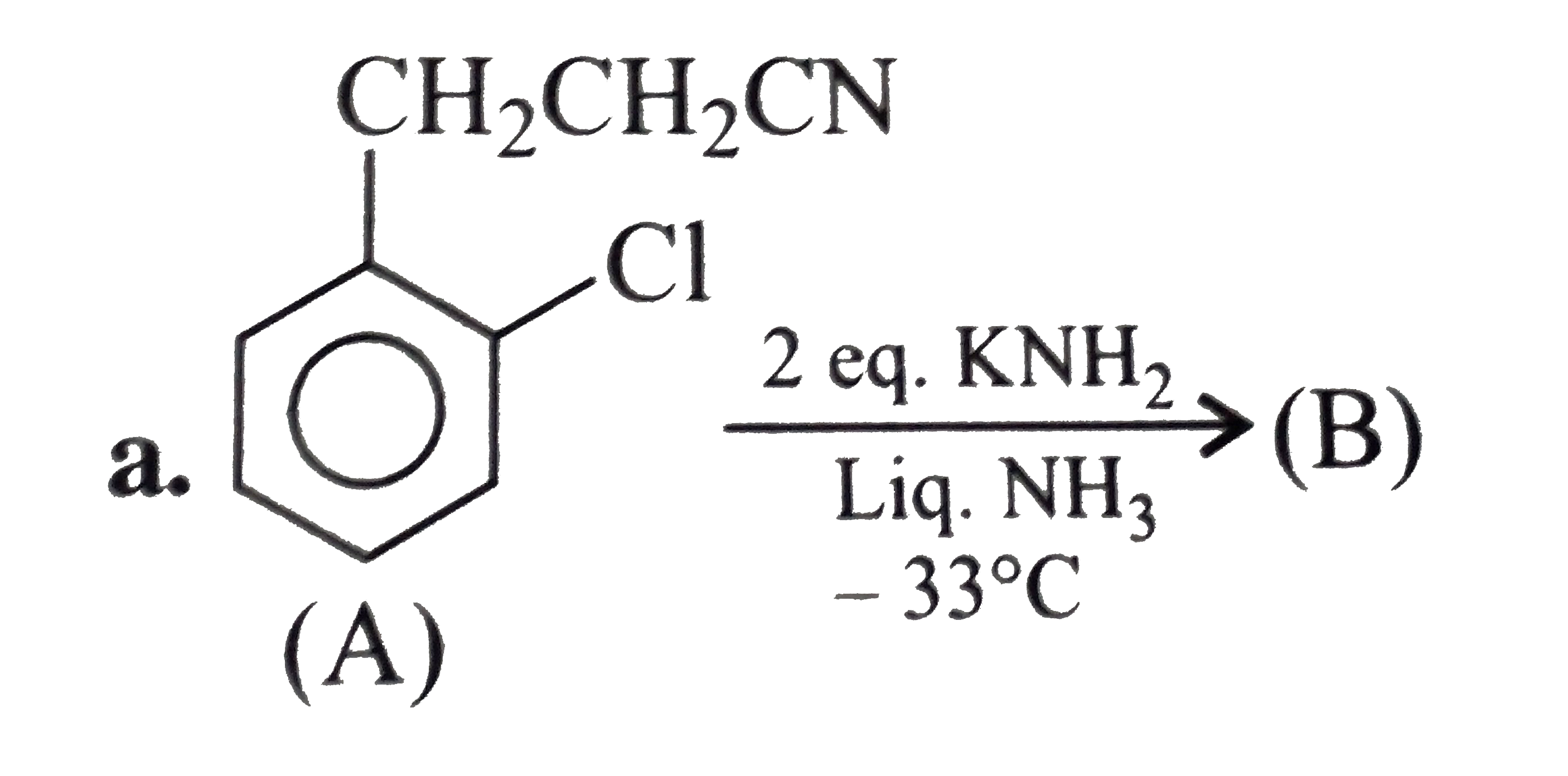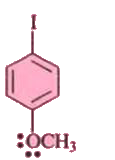Which of the following statements is/are wrong about pericyclic reaction ? (a) It is intramolecular cyclisation of acyclic compound. (b) It is intermolecular cyclisation of acyclic compound. (c) It proceeds via concerted mechanism in which breaking and formation of bonds take place simultaneously. (d) It proceed via free-radical mechanism.
(a) It is intramolecular cyclisation of acyclic compound.
(b) It is intermolecular cyclisation of acyclic compound.
(c) It proceeds via coincerted mechanism in which breaking and formation of bonds take place simultaneously.
(d) It proceed via free-radical mechanism.
The correct Answer is:B, D
To determine which statements about pericyclic reactions are incorrect, let's analyze each option step by step.
Step 1: Understand Pericyclic Reactions
Pericyclic reactions are a class of reactions that occur through a concerted mechanism, meaning that bond breaking and bond formation happen simultaneously without the formation of intermediates. They typically involve compounds with conjugated π-bonds and can be initiated by heat or light.
Step 2: Analyze Each Statement
Now, let's evaluate each of the provided statements:
(a) It is intramolecular cyclisation of acyclic compound.
- This statement is correct. Pericyclic reactions can involve intramolecular cyclization, where the reaction occurs within a single molecule.
(b) It is intermolecular cyclisation of acyclic compound.
- This statement is wrong. Pericyclic reactions typically involve intramolecular processes rather than intermolecular cyclization.
(c) It proceeds via concerted mechanism in which breaking and formation of bonds take place simultaneously.
- This statement is correct. Pericyclic reactions are characterized by a concerted mechanism.
(d) It proceeds via free-radical mechanism.
- This statement is wrong. Pericyclic reactions do not proceed through free-radical mechanisms; they are concerted and do not involve free radicals.
Conclusion
The incorrect statements about pericyclic reactions are:
- (b) It is intermolecular cyclisation of acyclic compound.
- (d) It proceeds via free-radical mechanism.
Final Answer
The wrong statements are (b) and (d).
---
Pericyclic reactions are a class of reactions that occur through a concerted mechanism, meaning that bond breaking and bond formation happen simultaneously without the formation of intermediates. They typically involve compounds with conjugated π-bonds and can be initiated by heat or light.
Now, let's evaluate each of the provided statements:
- This statement is correct. Pericyclic reactions can involve intramolecular cyclization, where the reaction occurs within a single molecule.
- This statement is wrong. Pericyclic reactions typically involve intramolecular processes rather than intermolecular cyclization.
- This statement is correct. Pericyclic reactions are characterized by a concerted mechanism.
- This statement is wrong. Pericyclic reactions do not proceed through free-radical mechanisms; they are concerted and do not involve free radicals.
The incorrect statements about pericyclic reactions are:
- (b) It is intermolecular cyclisation of acyclic compound.
- (d) It proceeds via free-radical mechanism.
The wrong statements are (b) and (d).
Topper's Solved these Questions
- BOOK - CENGAGE CHEMISTRY ENGLISHCHAPTER - ALKANES AND CYCLOALKANESEXERCISE - Single Correct45videos
ALKANES AND CYCLOALKANES
- BOOK - CENGAGE CHEMISTRY ENGLISHCHAPTER - ALKANES AND CYCLOALKANESEXERCISE - Archives13videos
ALKANES AND CYCLOALKANES
- BOOK - CENGAGE CHEMISTRY ENGLISHCHAPTER - ALKANES AND CYCLOALKANESEXERCISE - Reasoning and Assertion2videos
ALKANES AND CYCLOALKANES
- BOOK - CENGAGE CHEMISTRY ENGLISHCHAPTER - ALKENES AND ALKADIENESEXERCISE - Single correct Answer14videos
ALKENES AND ALKADIENES
Similar Questions
a.

b.
The formation of (D) form (C ) proceeds via the formation of which of the following intermediate species ?View Solution(i) Which of the following statements is wrong about alkanes ?
(A) They are all saturated hydrocarbon.
(B) They can undergo addition as well as substitution reaction.
(C) They are almost non polar in nature.
(D) On complete combustion give out carbon dioxide and water.View Solution
Knowledge Check
- Question 1 - Select One
Which of the following statements is not true ? (a) Intermolecular hydrogen bonds are formed between two different molecules of compounds. (b)Intramolecular hydrogen bonds are formed between two different molecules of the same compounds. (c)Intramolecular hydrogen bonds are formed within the same molecule. (d) Hydrogen bonds have strong influence on the physical properties of a compound.
AIntermolecular hydrogen bonds are formed between two different molecules of compounds.BIntramolecular hydrogen bonds are formed between two different molecules of the same compounds.CIntramolecular hydrogen bonds are formed within the same molecule.DHydrogen bonds have strong influence on the physical properties of a compound. - Question 2 - Select One
Aliphatic nucleophilic substitution is mainly of two type SN1 and SN2.SN2 reaction proceed with strong nucleophile in polar aprotic solvent. 3∘ halides do not give SN2 reaction. Inverted products are obtained in this reaction and mechanism of reaction occurs through the formation of transition state.
SN1 reaction proceed through the formation of carbocation in polar aprotic solvent. Solvent itself acts as nucleophile in this reaction. Racemization takes place in SN1 reaction.
Which of the following compounds will give SN1 reaction?APh−CH3∣−∣ClCH2CH3BH3C−ClCH3C−CH2−BrD
Of the following statements which are true for SN1 reaction.
(a) Tertiary alkyl halides react faster than secondary.
(b) The absolute confuguration of the product is oppsoite to that of the reactant when an optical active substrate is used.
(c) The reactio shows first order kinetics.
(d) The rate of reaction depends markely on the nucleophilicity of the nucleophile.
(e) The mechanism is two step.
(f) Carbocations are intermediate.
(g) Rate =K[Alkyl][halide]
(h) The rate of teh reaction depends on the nature of the leaving group.View SolutionOf the following statements , which are true for SN2 reaction.
(a) Tertiar alkyl halides reacts faster than secondary.
(b) The absolute configuration of product is opposite to that of the reactant when an optically active substrate is used.
(c) The used shows first order kinetics.
(d) The rate of the reaction depends markedly on the nucleophilicity of the attacking reagent.
(e) The mechanism is one step.
(f) Carbocations are intermediate.
(g) Rate ∝ [Alkyl][halides]
(h) The rate of the reaction depends on the nature of the leaving group.View SolutionTo stop bleeding from an injury ferric chloride can be applied. Which of the following comment (s) about the statement is justified?
(a) it is not true, ferric chloride is highly poisonous
(b) it is true, Fe3+ ions coagulate blood which is negatively charged sol.
(c) it is true, coagulation takes place because of formation of negatively charged sol with Cl− ions
(d) it is not true, Cl− ions form positively charged sol, profuse bleeding takes place (e) it is not true, ferric chloride is ionic and gets into blood streamView SolutionWhich of the following statements about cell wall are correct ?
(a) Mainly composed of phospholipid
(b) Determine shape of cell
(c) Protects cell from mechanical damage
(d) Protects cell from infection
(e) Present in all eukaryotic cells
(f) Provide barrier to undesirable macromolecules
(g) Quasifluid in nature
(h) Non living rigid structure
(i) May be traversed by plasmodesmataView SolutionRead the following statements (a-e) and choose the suitable option w.r.t. respiration
a. A series of slow step-wise reactions controlled by enzymes.
b. Breaking of the C-C bonds of respiratory substrates through oxidation within the cells.
c. Liberation of energy.
d. Breakdown of complex molecules to yield energy which takes place in mitochondria only.
e. Carbon skeleton produced during respiration is not used as precursor for cellular biosynthesis of other molecules.View SolutionRead the following statements and choose the option which includes all incorrect statements. (a) Inulin is a fructosan polysaccharide (b) Backbone of DNA helices is made of hydrogen bonds between nitrogenous bases (c) Enzyme that catalyses the removal of groups from substrates by the mechanism which leaves double bonds in products is a hydrolase (d) Insulin is a proteinaceous hormone
View Solution
